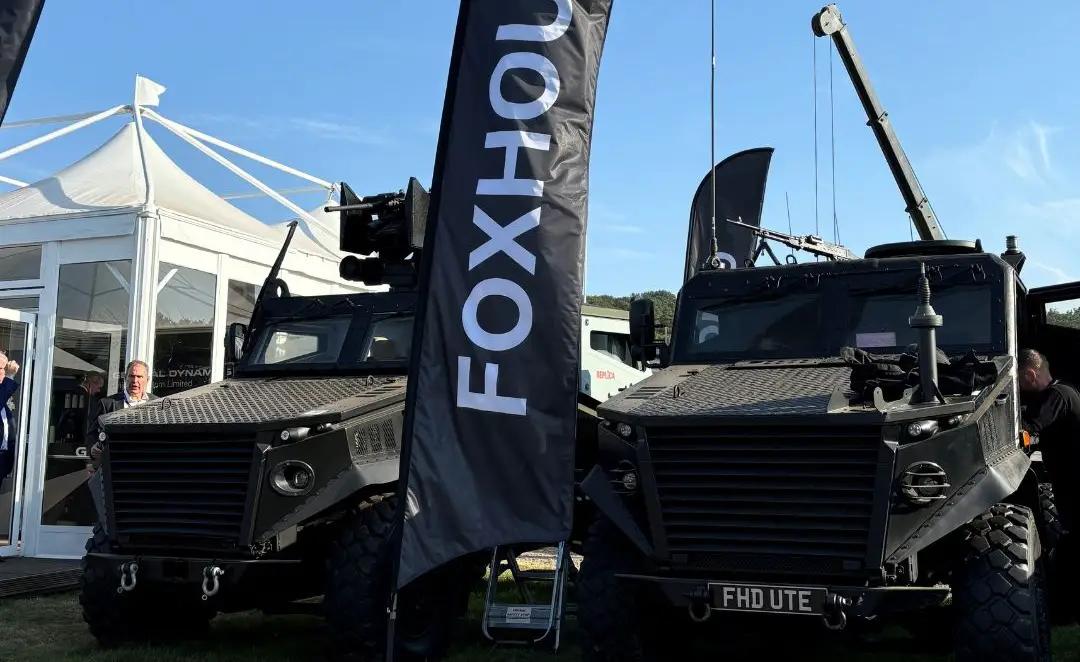The British Army has reached a significant milestone with the delivery of the first Command and Control Vehicle (C2V) variants of the Foxhound, marking a new chapter in the evolution of this renowned armored vehicle. Developed by General Dynamics Land Systems–UK, the C2V variant is part of a larger effort to upgrade and enhance the operational capabilities of the British Army’s light infantry and specialist troops. The Foxhound, known globally by its brand name “Ocelot,” has been in service since 2012, with 400 vehicles already delivered. The latest variants are set to be fully operational by March 2025. These new Command and Control conversions represent a step forward in ensuring that the British Army remains equipped with cutting-edge technologies, enabling them to effectively manage battlefield communications and tactical operations.
Originally designed by Force Protection Europe in collaboration with Ricardo, the Foxhound has built a strong reputation for its adaptability and operational resilience. The vehicle’s modular design allows it to be easily modified for a range of roles, including serving as an ambulance, supply vehicle, or command post. This versatility, combined with its robust protection against improvised explosive devices (IEDs) and other threats, has made the Foxhound a trusted asset in global operations, from the harsh conditions of Afghanistan and Iraq to cold-weather deployments in Norway. The British Army’s decision to upgrade the Foxhound fleet with Command and Control capabilities highlights the vehicle’s flexibility. Force Protection Europe Limited (FPE) was the European subsidiary of Force Protection Inc, which was acquired by General Dynamics in 2011. Following the acquisition by General Dynamics in December 2011, the Foxhound is marketed as part of General Dynamics Land Systems vehicle portfolio.
Powered by a Steyr M16-Monoblock diesel engine paired with a ZF 6-speed automatic transmission, the Foxhound reaches speeds of up to 82 mph (132 km/h), making it both fast and reliable in varied terrains. One of its key innovations is the independently functioning wheels, which allow the vehicle to continue operating even if one is compromised, providing added survivability on the battlefield. Its advanced composite cabin materials offer protection comparable to traditional metal armor but with the added benefits of reduced weight and increased fuel efficiency. This lightweight yet durable design ensures the vehicle can tackle terrains that would be challenging for many other military vehicles, such as deep mud, jungle paths, and rugged off-road environments. In line with the UK Ministry of Defence’s Generic Vehicle Architecture (GVA) requirements, the Foxhound is equipped with a standard digital electronic and electrical architecture.
The C2V Foxhound is part of a broader communications modernization strategy spearheaded by General Dynamics. This includes the development of the next-generation tactical communication system, “Evolve to Open” (EvO), which will revolutionize how the British Army plans, deploys, and manages its battlefield communications. The C2V variant is designed to work alongside this new system, providing commanders with enhanced situational awareness and the ability to effectively coordinate troops in real-time. With the delivery of the Foxhound C2V variants, General Dynamics Land Systems–UK continues its legacy as a key defense partner to the UK Armed Forces. This development is part of a broader effort to equip the British Army with next-generation technologies, ensuring it remains agile, well-protected, and capable of meeting the challenges of modern warfare. As the Foxhound continues to evolve, its role in safeguarding troops and enabling mission success will remain critical for years to come.













